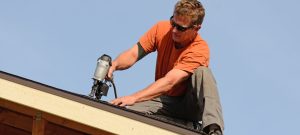
Roofs don’t last forever. Depending on the type of material, a roof typically needs replacement every 10 to 30 years. Factors such as weather conditions, maintenance, and unexpected damage can accelerate wear and tear. If you’re unsure whether it’s time for a new roof, start by considering its age and looking for visible warning signs. A roofing contractor can provide a professional inspection to determine if repairs will suffice or if a full replacement is necessary.
Consider Your Roof’s Age
One of the first steps in determining whether your roof needs replacement is understanding its age. If you purchased your home years ago and are unsure when the roof was last replaced, here’s what you can do:
- Contact the previous homeowners if possible.
- Check for building permits that indicate when the roofing permit was issued.
- Consult a roofing contractor or home inspector for an estimate.
Once you know the age, compare it to the average lifespan of common roofing materials:
- Asphalt Shingles: 15 to 30 years
- Architectural (Laminated) Shingles: 25 to 30 years
- Clay Tile: 50 years
- Metal: 70 years
Even if your roof hasn’t reached the end of its expected lifespan, significant damage from storms, harsh winters, or high winds may require earlier replacement. Regular inspections can help identify minor issues before they turn into costly problems.
Signs You Need a Roof Replacement
Beyond age, certain warning signs indicate that a roof may be failing. If you notice any of the following, consider calling a roofing contractor for an inspection.
1. Leaks
Water stains on ceilings, damp spots in the attic, or visible leaks are major red flags. Even minor leaks can lead to mold growth and structural damage if left unaddressed. If your roof is leaking, immediate action is necessary.
Water intrusion is one of the most common causes of structural issues in buildings. Studies show that 40% of all building problems—both residential and commercial—can be traced back to leaks. Even a small amount of water damage can escalate quickly, leading to mold and mildew growth within 24 hours. Addressing leaks as soon as they are detected can prevent extensive and costly damage.
2. Curling or Buckling Shingles
Shingles should lie flat. If they begin to curl or buckle, they can no longer provide a watertight barrier, increasing the risk of leaks. Widespread curling often signals that a roof replacement is imminent.
3. Missing Shingles
Strong winds and storms can rip shingles from the roof, leaving your home vulnerable. While a few missing shingles may only require repairs, extensive loss can compromise the roof’s integrity and necessitate a full replacement.
4. Blistering
Blistering occurs when trapped moisture or gas forms bubbles on shingles. This issue often stems from poor attic ventilation or prolonged sun exposure. Minor cases can be repaired, but severe blistering may require a new roof.
5. Cracked Shingles
Cracking is common in older shingles due to temperature fluctuations. These cracks reduce wind resistance and allow moisture to seep in, leading to further deterioration. If cracks appear throughout the roof, replacement may be the best option.
6. Excessive Granule Loss
Granules protect shingles from the elements. If you find large amounts of granules in your gutters or on the ground, your roof may be nearing the end of its lifespan. Heavy granule loss weakens shingles, making a replacement necessary.
7. Rotting Shingles
Rotting shingles are a serious problem that can spread if left untreated. If the damage is extensive, a new roof may be required to prevent further structural issues.
8. Light Coming Through the Attic
If you can see daylight through your attic ceiling, water can also enter. Soft spots, moisture buildup, and staining are additional signs that a replacement may be needed.
9. Sagging Roof
A sagging roofline can indicate significant structural problems, such as water damage, excess weight, or design flaws. This is a major concern that requires immediate attention from a roofing contractor.
Get a Professional Roof Inspection
If you’ve identified any of these warning signs, the next step is to seek a professional opinion. A roofing contractor can assess the extent of the damage and determine whether repairs or a full replacement is necessary. Regular inspections help catch minor issues before they become costly problems, ensuring your roof remains in good condition for years to come.
FAQs About Roof Replacement
How often should a roof be replaced?
The lifespan of a roof depends on the material. Asphalt shingles typically last 15 to 30 years, while metal and tile roofs can last much longer. Regular inspections can help determine when a replacement is necessary.
Can I replace just part of my roof?
In some cases, a partial roof replacement is possible, especially if the damage is isolated. However, if there are widespread issues, a full replacement is usually the best option to maintain structural integrity.
What happens if I delay replacing my roof?
Delaying roof replacement can lead to severe water damage, mold growth, and structural problems. It’s best to address roofing issues promptly to avoid higher repair costs.
How long does a roof replacement take?
A typical roof replacement can take anywhere from one to three days, depending on the size of the roof and weather conditions.
Will my homeowner’s insurance cover roof replacement?
Insurance may cover roof replacement if the damage is due to a covered peril, such as a storm or fire. However, normal wear and tear is typically not covered. It’s best to check with your insurance provider for details.
